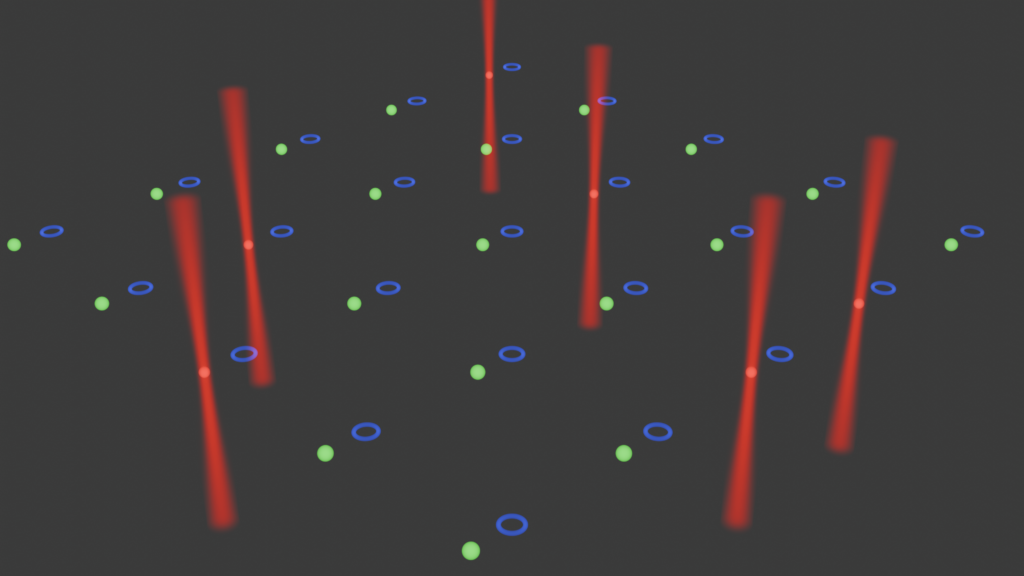Travailler au LKB
Retrouvez sur cette page nos offres destinées aux stagiaires, doctorants, post-doctorants…
Si aucune proposition ne correspond à votre profil, vous pouvez contacter directement les équipes.
Vous pouvez également consulter nos offres de stage sur le site de Sorbonne Université et de ENS – PSL.
Certaines de nos offres d’emploi pour les doc, post-doc et IT sont consultables sur le site du CNRS.
PhD position — Quantum simulation with a hybrid Rydberg atom platform
A M2 internship/PhD position is open in the Rydberg atoms group of LKB, towards quantum simulation with circular Rydberg atoms of Rubidium.
Contacts: clement.sayrin@lkb.ens.fr, michel.brune@lkb.ens.fr
Scientific context
Rydberg atoms, i.e., atoms excited to high-principal-quantum-number levels, are particularly well suited to the quantum simulation of condensed matter systems [1]. They can be prepared from arrays of single atoms, laser-trapped in optical tweezers, and their strong dipole-dipole interactions (in the MHz range, even at a few microns) combined with their few-100µs lifetimes enable the observation of quantum phase transitions and of quenched dynamics.
Circular Rydberg atoms, i.e., Rydberg atoms with maximal angular momentum, have a 100-times longer lifetime. Their use would bring quantum simulations to unprecedented regimes, with the simulation of long-term dynamics, such as thermalization. They would also enable the simulation of large interacting spins, beyond spin-1/2 physics.
However, their use has been so far limited because they have no optical transitions, hindering their individual detection and manipulation in an array. We propose to remove this limitation with a hybrid platform, combining an array of laser-trapped circular atoms of Rubidium with an auxiliary array of Rb ancilla atoms transiently excited to a regular low-angular momentum Rydberg level. We trap the circular Rydberg atoms in optical bottle beams [2] and the ancilla atoms in Gaussian optical tweezers. They interact through a resonant dipole-dipole interaction.
Using a resonant dipole-dipole interaction between the ancilla and circular atoms, we have recently demonstrated the quantum non-demolition measurement of the circular Rydberg atoms with the ancillae, as well as a spatially-resolved manipulation of their quantum states [3]. In addition, we have measured the dipole-dipole interaction between two circular Rydberg atoms, and observed the coupling between spin and motional degrees of freedom [4]. This now opens the way to genuine quantum simulation with circular Rydberg atoms.
M2 Internship
Our experiments are performed in a UHV chamber operated at room-temperature. To fully benefit from the long lifetimes of the circular Rydberg atoms, we need to transfer the existing setup to a cryogenic environment. The intern will actively participate to the development of the cryogenic platform. In particular, he/she will participate to the adaptation of the optics, microwave and radiofrequency setups to the cryogenic platform. His or her work will, thus, constitute, a decisive contribution to our quantum simulations project.
PhD Thesis
The first months of the PhD work will be devoted to the operation of the new cryostat and its optimization. We will benefit from the enhanced lifetimes of the Rydberg levels to improve the performances of the existing room-temperature setup. During the PhD work, the proposed quantum simulator will then be operated. Quantum simulation of spin-1/2 Hamiltonians will first be performed, with the observation of long-term dynamics, out of the reach of existing simulators. We will then focus on the simulation of the interaction between spin 1s or larger. We will in particular use the ancillae to tune the interaction between the circular Rydberg atoms, using techniques developed in on-going collaborations with theoretical teams
References
[1] T. L. Nguyen et al., PRX 8, 011032 (2018)
[2] B. Ravon et al., PRL 131, 093401 (2023)
[3] P. Méhaignerie et al., PRX Quantum 6, 010353 (2025)
[4] Y. Machu et al., arXiv :2509.24691 (2025)

